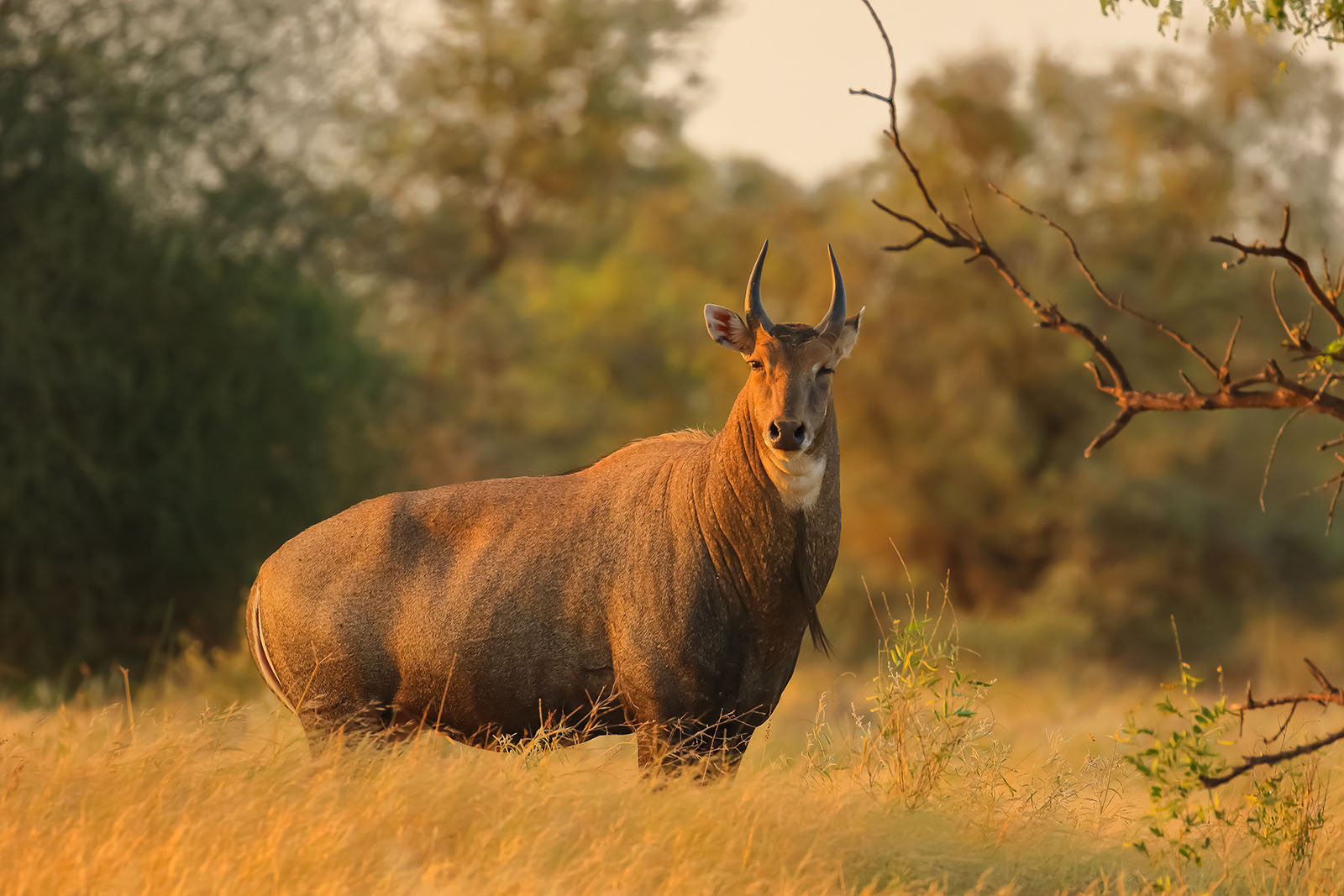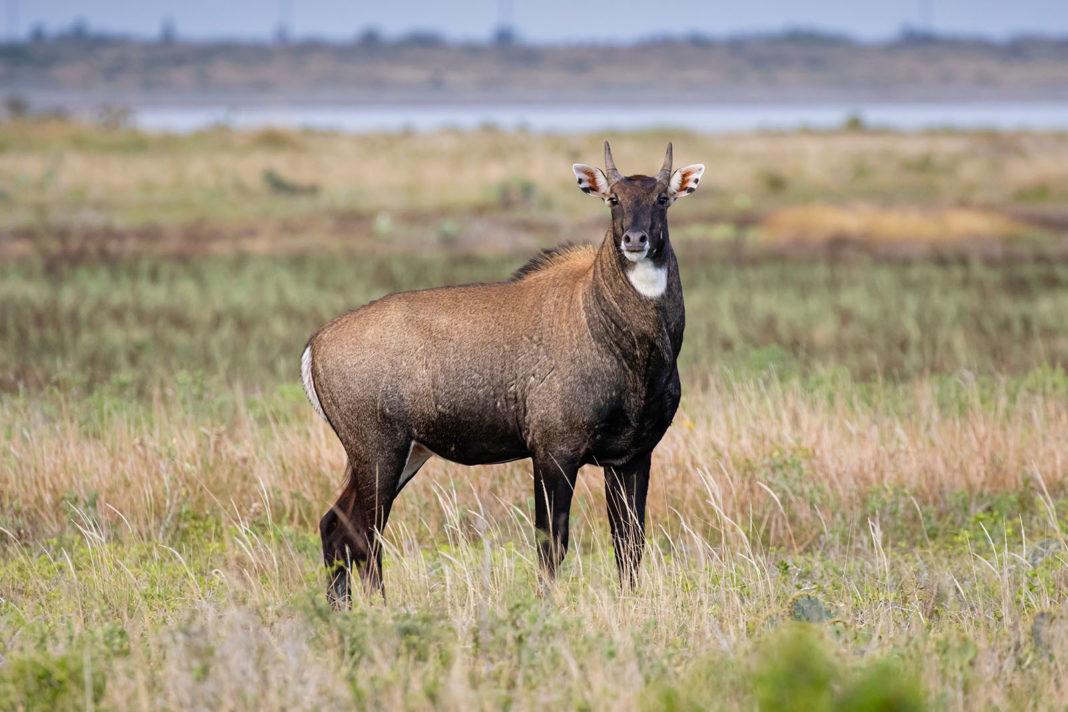Nilgai antelope are right at home in the vast reaches of the brush country.
Starting south of Corpus Christi and extending through the Wild Horse Desert and into the Rio Grande Valley, you’ll find the perfect habitat for “blue bulls,” which have continued to thrive since being introduced in the 1930s in and around the King Ranch. Today, there are tens of thousands — by some estimates upward of 50,000 nilgai — roaming across some of the most distinct and sometimes unforgiving territory in Texas.
There are many high-fence tracts that harbor the offspring of transplants from Asia, but there also are plenty of these hefty critters eclipsing 600 pounds roaming free and with little regard for low fences of any design.
For better or worse — as with many other hunting opportunities — the overall investment involved with setting up a hunt for the largest Asian antelope species has continued to rise in the Lone Star State. While there are public hunt drawings for national wildlife refuges in South Texas, the main way to get in on our state’s prime big game hunting quarry is to set up a hunt through an outfitter, guide or landowner.
If you’re going to be shelling out some of your hard-earned treasure on what likely is a bucket list hunt for almost any Texan, you’re advised to consider many aspects of what goes into pursuing blue bulls. With that in mind, here’s a primer on nilgai hunting and how you can make the most of your time and effort in aiming at a successful hunt.

Texas Nilgai Hunting: Do your research
The cost associated with hunting either a bull or a smaller cow nilgai has risen in the past decade, something that’s simply a sign of the times. Any reputable guide or outfitter is going to charge thousands of dollars to shoot a nice bull and somewhat less for a cow. There also are some folks out there who are going to try and take advantage of the situation by offering “cheap hunts,” which is a red flag by any definition, no matter what the hunt might be.
I’ve known hunters and heard of others who were offered an opportunity that as it turned out was too good to be true. Some of those stories included being taken advantage of under the guise of being a cheaper nilgai alternative without any actual animals being seen all the way up to hunters being unaware that the land they were hunting constituted trespassing because their “guide” either didn’t have access or simply was trying to circumvent all proper hunting practices to make a buck. The last thing you want or can afford on multiple fronts is being caught trespassing by a landowner or game warden.
A simple online search yields numerous nilgai hunting operations ranging from large-scale outfitters to single guides and this is where getting all the right information is vital, especially with the cost involved. A trustworthy hunting operation can provide all the right information and answer all the questions quite succinctly that a paying hunter should have. That being said, it’s up to you to ensure that everything is aboveboard before you even think about stepping into the field.
Texas Nilgai Hunting: Prepare Accordingly
Nilgai offer a challenging hunt, plain and simple. That’s especially true on large swaths of the Wild Horse Desert that are seemingly inhospitable for human encroachment. As stated previously, nilgai are right at home in an environment where they can thrive and have no known natural predators. Nilgai, much like every other antelope species, rely on sight to detect anything they deem to be a threat. Hunting the open country of South Texas equates to a much different experience than most deer hunters face.
The typical nilgai hunt is done safari style, trekking around in a four-wheel drive or UTV until either a herd of animals or a single bull is spotted, and then disembarking and pursuing on foot. Another approach is spot and stalk, which usually involves hiking over great distances, sometimes measured in miles at the end of the day.
This is where using good gear isn’t just important, it’s imperative. It’s possible that a hunting party may be able to drive up close and hop out to get a quick shot, but that’s certainly a long shot. As noted before, if you’re shelling out a hefty bounty, you want to stack the odds in your favor, which means having quality boots and optimal gear for either cold or warm weather — or possibly both — as the conditions can change quickly in South Texas, just like any part of the state.
Almost every reputable nilgai hunting outfit will have a way to transport a big animal from the field to the skinning rack and cooler, which is another question to think about when booking a trip. You’re not dragging one out by yourself!
Texas Nilgai Hunting: Pick Your Shots
The greatest debate in nilgai hunting comes down to caliber. I’ve seen numerous pictures of hunters with nilgai felled by rifles ranging from the .243 and the .257 to the 6.5 and 7 mag. I’ve also seen nilgai killed with a compound bow, and yes, it can be done!
However, most guides — and rightly so — will stress using a larger bore and stouter bullets, starting at .30 caliber and going up from there for animals that can simply be hard to knock down and can run a long way even with what will become a mortal wound. Part of that rationale, I believe, is that more sheer force and shock is one way of overcoming what could possibly be a misplaced shot, no matter the circumstance.
Whatever caliber you happen to tote afield, you’d best be proficient with it when you’re pursuing nilgai. You might get an 80-yard shot, or it could be three football fields away, or farther. That means practicing with the ammo you’ll be using at the range, and also focusing on how you’ll be shooting. Some hunters can punch paper solid all day long sitting with a rest at the range but aren’t as adept shooting prone or off a stick, which might be how your nilgai shot lines up if you’re doing a spot and stalk up and down the rise and fall of coastal sand dunes.
Another consideration is the anatomy of the nilgai when discussing shot placement. The vitals sit farther forward in the chest cavity than those of a Texas whitetail. If you’re sizing up the ideal broadside shot to clip the heart and/or lungs, it would be about a third of the way up from where the front shoulder starts.
Texas Nilgai Hunting: Plan for Success
Not all successful hunts are measured by a kill, but in the case of nilgai, there’s nothing better than celebrating the spoils of exceptional table fare. Make no mistake, there may be no finer a lean meat on this planet, and if you successfully down one of these critters, you’ll quickly find out that you may have more protein than you know what to do with!
It’s hard to fathom the size of a hefty blue bull until you walk up on one or until it’s hanging up to be skinned. They resemble a side of beef once you’ve got the hide off and a big bull will yield hundreds of pounds of meat once it’s all finally been taken off the animal.
If you’re going to take the animal to a processor to have it turned into any number of fine cuts or grinds, you might be in for another surprise price tag that’s ultimately going to accompany your hunting bill. Even if you decide to process the meat yourself, the best advice is to either invest in another freezer if you’ve got other wild game spoils or share the meat with others.
Every successful nilgai hunter I know always has extra “friends” coming out of the woodwork when it’s time to find a place for all that delicious, healthy meat!
Texas nilgai hunting expands with increased management of exotic species




















